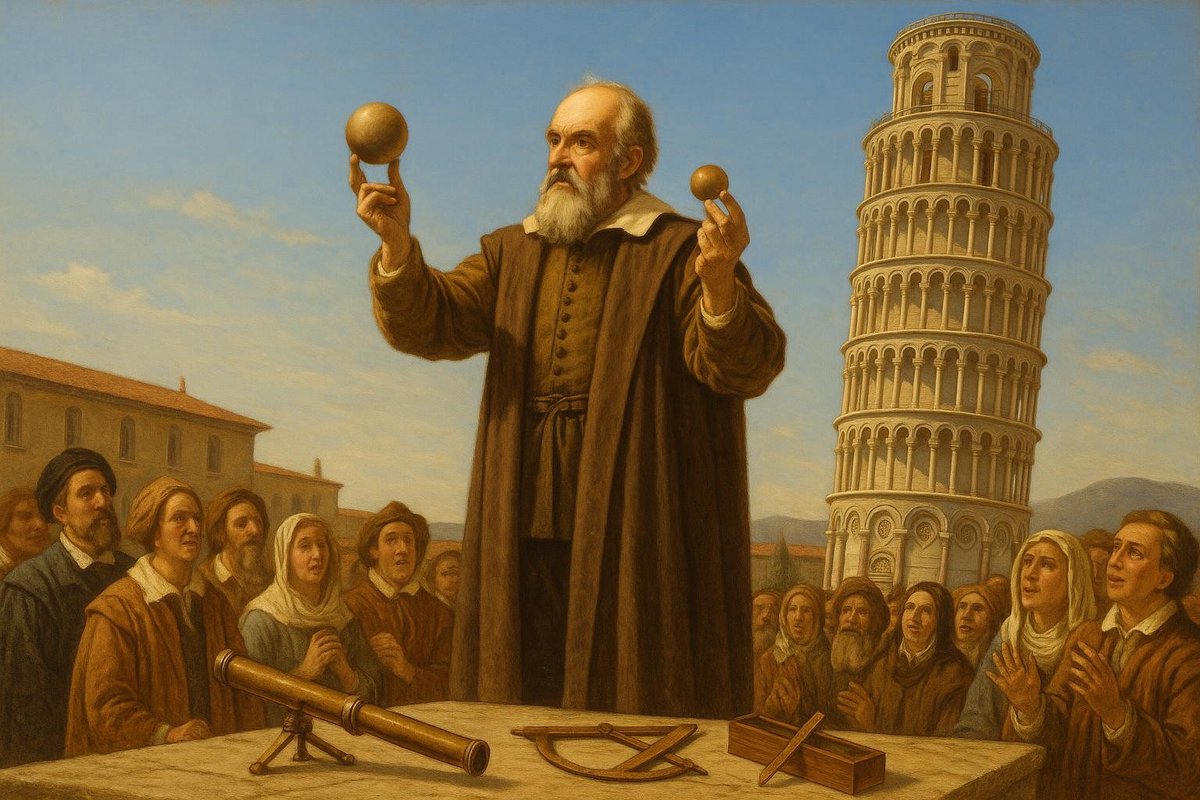
Picture this: a time when gravity was a mystery, and the natural world was cloaked in secrets waiting to be unveiled. From this backdrop arose a bold thinker, Galileo Galilei, who dared to challenge age-old beliefs and sought to unravel the mysteries of falling objects. Through a series of innovative experiments from the iconic Leaning Tower of Pisa, Galileo embarked on a quest to understand the language of nature itself. Join me on this historical journey where science, curiosity, and a leaning tower converge.
Hypothesis & Context
Before Galileo’s time, the widely accepted view was that heavier objects fell faster than lighter ones, a belief handed down from the days of Aristotle. But Galileo, with a mind as sharp as a mathematician’s compass, suspected otherwise.
- Galileo hypothesized that, in the absence of air resistance, all objects would fall at the same rate, regardless of their mass.
- This hypothesis was revolutionary, challenging centuries of established thought and setting the stage for a scientific revolution.
Not only was the scientific backdrop ripe for discovery, but the cultural and intellectual climate of the Renaissance provided fertile ground for questioning traditional doctrines. The rebirth of interest in classical knowledge and burgeoning scientific inquiry inspired Galileo, fueling his determination to explore the truth.
Setup & Method
Galileo’s experiments at the Leaning Tower of Pisa were as audacious as they were brilliant. Picture the scene: a crowd gathers in the shadow of the tower, murmuring with anticipation as Galileo prepares to defy the dogmas of old.
- He ascends the tower with two spheres of different masses, prepared to drop them simultaneously from the heights above.
- As the spheres plummet, observers hold their breath, waiting to see if both will indeed strike the ground together.
This simple yet ingenious setup allowed Galileo to test his hypothesis in a tangible way. By using the tower as his laboratory, he turned a local landmark into a crucible of scientific discovery. His method was both literal and symbolic—a new height from which to challenge entrenched beliefs.
Results & Reactions
As the spheres hit the ground almost simultaneously, the crowd witnessed a moment that would echo through the annals of science. The implications were clear: gravity’s pull does not discriminate by weight.
- Galileo’s findings starkly contradicted Aristotelian physics, providing visible proof that motion did not behave as previously thought.
- The reactions were as diverse as they were profound, with some embracing the new knowledge and others clinging fiercely to tradition.
Galileo’s work ignited debates, catalyzing the eventual breakdown of Aristotelian dominance in physics. It opened the door for a more empirical approach to scientific inquiry, laying the groundwork for future giants like Newton.
Implications
Galileo’s experiments with falling objects were more than mere demonstrations of gravity’s uniform pull; they were a testament to the power of observation and experimentation.
- This pivotal moment in science highlighted the importance of empirical evidence over theoretical assumptions.
- Galileo’s approach set a precedent for future scientific inquiry, emphasizing the need for observation and experimentation.
By challenging the status quo, Galileo not only revolutionized our understanding of motion but also inspired generations of scientists to question, explore, and push the boundaries of human knowledge. His legacy reminds us that curiosity and boldness can unlock the deepest secrets of nature.
In the heart of Tuscany, at the Leaning Tower of Pisa, Galileo’s experiments transcended time, leaving an indelible mark on science and humanity’s quest for understanding.
Fuel Someone Else’s Curiosity
Our journey through Galileo’s groundbreaking experiments reminds us of the beauty in questioning the world around us. Share this story and inspire others to see science as an ever-evolving narrative. Who knows whose curiosity you might ignite next?

Leave a Reply